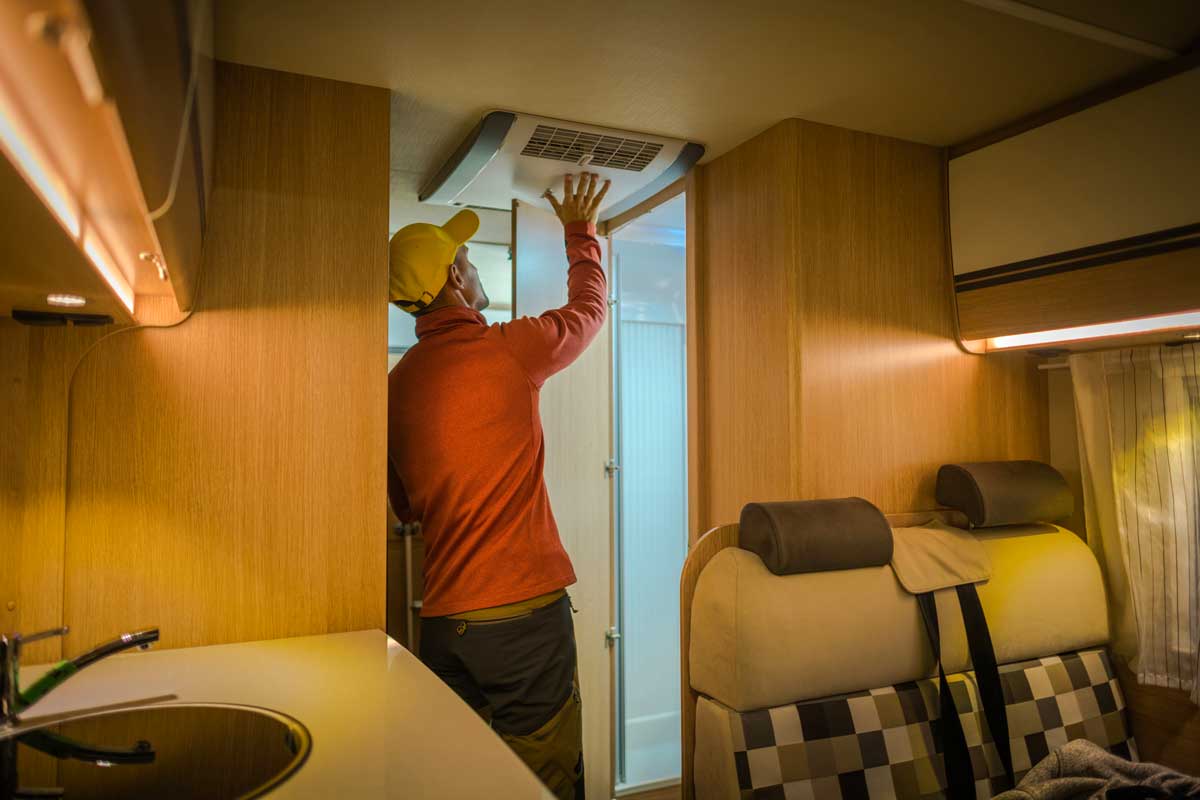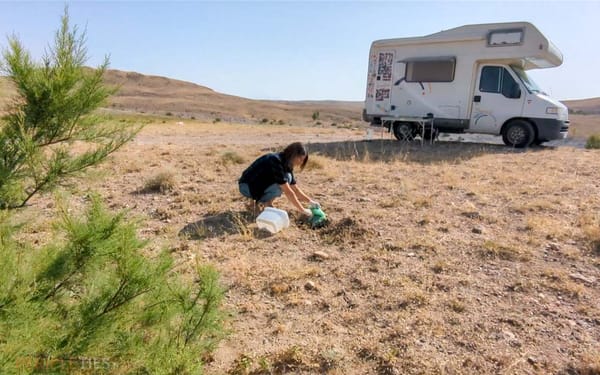How do you cool the air in a motorhome?
In summer or when travelling in hot regions such as Spain, Italy or Turkey, the heat can quickly become unbearable in the motorhome, especially at night. When temperatures stay above 20°C, we sleep badly and our bodies can't rest.
The solution? An efficient air conditioning system, capable of cooling the entire interior of the motorhome, not just the driver's cab.
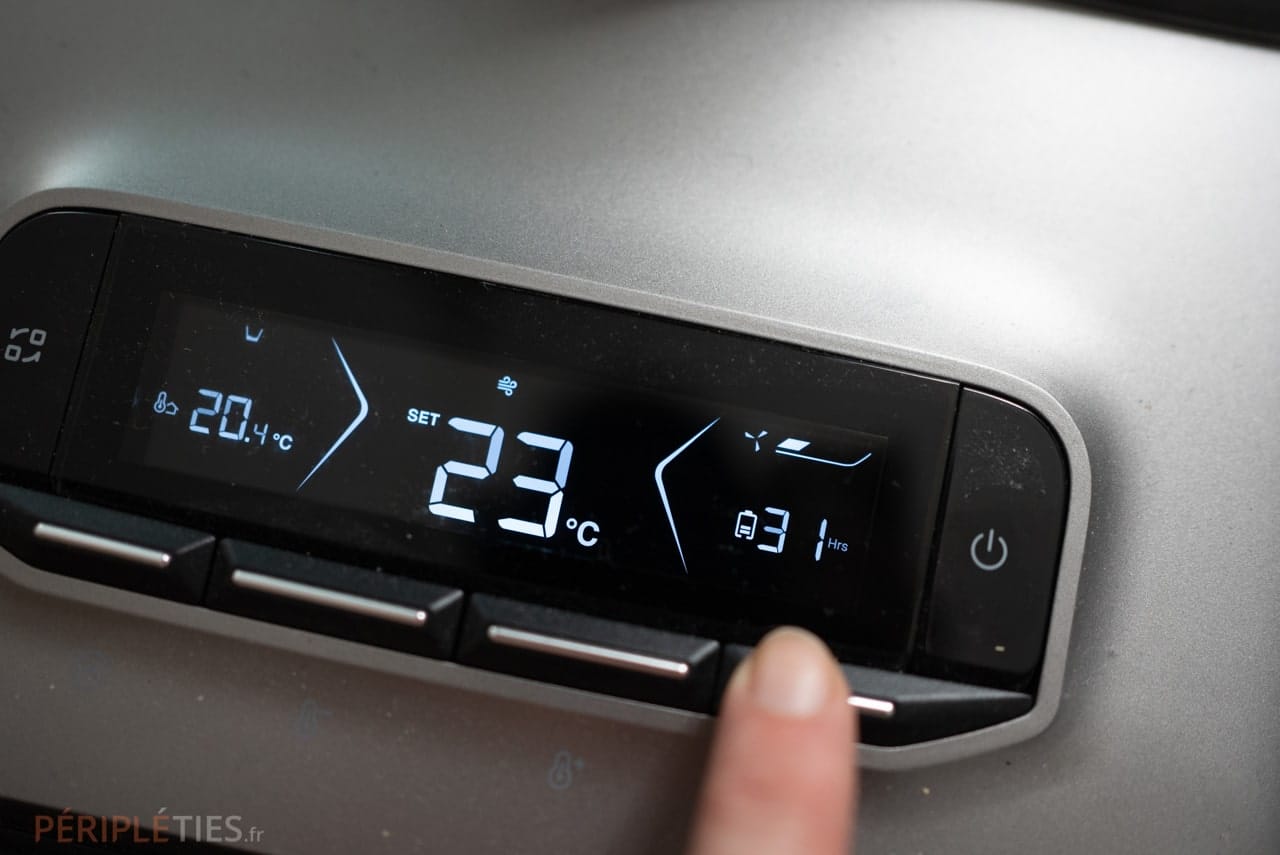
How does air conditioning work in a Motorhome?
Air conditioning in a motorhome works on the same principle as a fridge. It draws in warm air from inside the vehicle, cools it with a liquid refrigerant and then diffuses fresh air inside.
To do this, the air conditioning system needs a 230 V power supply. And depending on how hot it is, it can be quite energy-hungry.
High power consumption
This means that you need to be connected to a stable source of electricity, such as that found at campsites or via external generators.
Alternatively, you'll need a good electrical installation in your motorhome and Lithium batteries, a converter or nomad batteries.
If you know nothing about electricity in motorhomes, read our article to find out how it works.
The different types of air conditioning in a motorhome or caravan
Let's take a look at the different air conditioning options available for your motorhome, each suited to different needs and configurations.
Roof-mounted air conditioners
This is the most popular and effective option for motorhomes. The unit is placed on the roof, usually in an existing opening. Air flow directions can be individually adjusted via interior diffusers. Some models, such as the Dometic FreshLight 2200, even incorporate a skylight so that no natural light is lost.
Installation involves removing the window frame, inserting the unit into the roof opening and fixing it in place. This increases the height of the motorhome (between 20 and 30 cm) and wind resistance (allow for around 0.5L/100 km more fuel consumption when driving) but is well worth it for the comfort it provides.
Trunk-mounted air conditioners
Compact and discreet, these systems take advantage of often under-utilized storage space to house the air-conditioning unit, for example in a storage compartment or under the seats.
Installed at floor level, they distribute cool air via upwardly directed ducts. This also enables you to target certain areas, such as the living room during the day and the bedroom at night.
However, installation requires additional holes to be drilled in the vehicle floor for air exchange, and ducts to be run inside. But this system remains a good option if you want to preserve the exterior aesthetics of your motorhome.
Mobile or portable air conditioners
Flexible and portable, these air conditioners can be used inside the motorhome while parked, then stowed away when you're on the move. This makes them ideal for on-demand use.
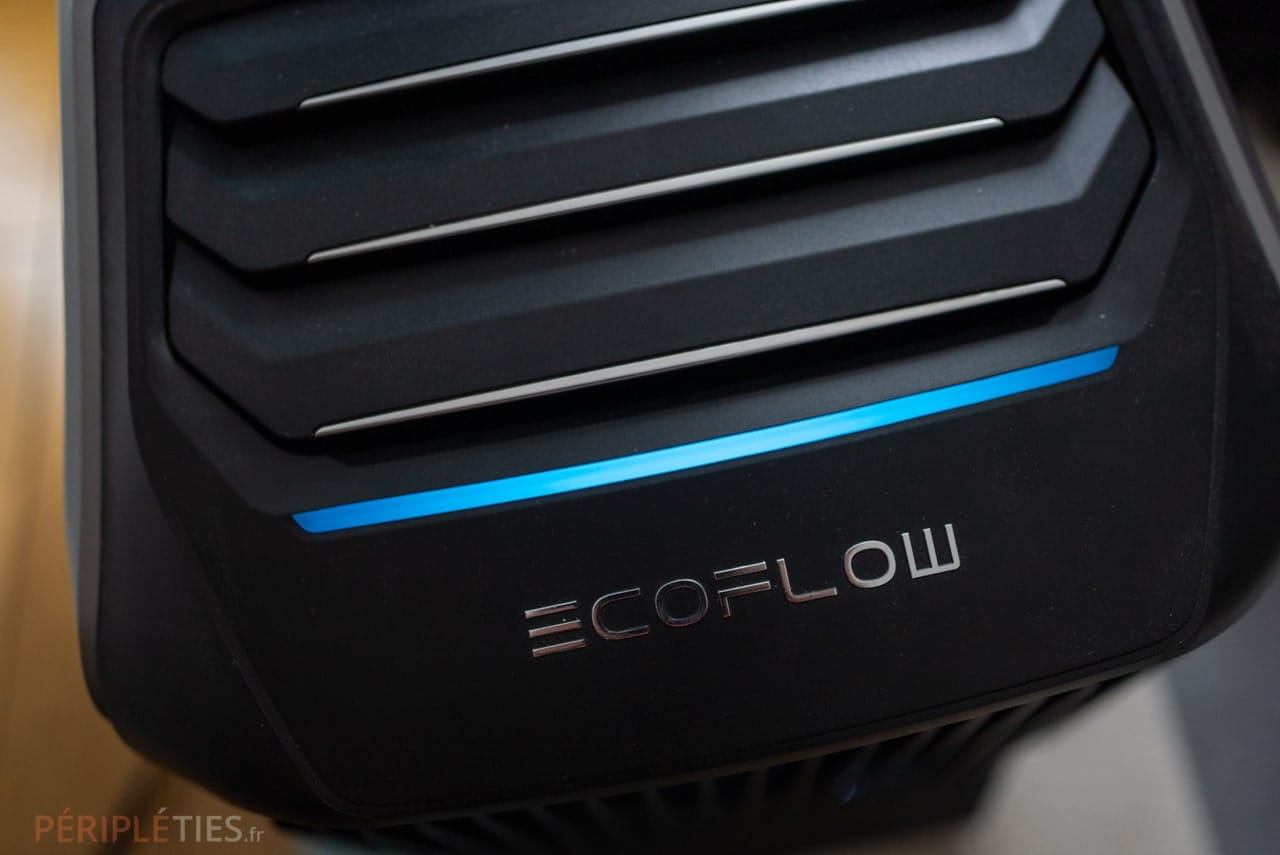
Although they require less complex installation, they are less powerful (and therefore less efficient) and much noisier than the other two systems.
There are also split models, such as the Berger Arktar 5000 or the Mestic SPA-5000, where one part of the unit is mounted outside the window and the other inside. Just remember to store the split air conditioner indoors before you leave.
What air-conditioning capacity should I choose?
The power of an air conditioner, often measured in watts (W) or British Thermal Units (BTU), indicates its ability to cool a given space in an efficient time. For motorhomes, the most important factor is the size of the vehicle.
- For converted vans and motorhomes up to 6 meters in length, a 1000 to 1800W air conditioner is sufficient. The Dometic FreshJet 1500M is a good choice.
- For motorhomes 6 to 7 meters long: aim for between 2000 and 2500W. Models like the Dometic FreshJet 2200 or Dometic FreshLight 2200 are ideal.
- For motorhomes between 7 and 8 meters long: you'll need between 2400 and 3000W. The Webasto Cool Top Trail 24 is an excellent option.
- For larger vehicles, over 8 meters: choose an air conditioner with more than 3000W, like the Dometic FreshJet 3000 or the Webasto Cool Top Trail 34.
12V or battery air conditioning: a good idea for motorhomes?
Some air conditioners are designed to run directly on the vehicle's 12V electrical system while driving. In this case, you need to take a 12-230 volt power converter with you.
The Plein-Aircon from Italy's IndelB can even run from the auxiliary battery when stationary, without the need for an inverter or generator. The same principle applies to the EcoFlow WAVE 2, which claims 8h autonomy with its additional battery. All the same, you can expect to pay around 2,000 euros for the former and 3,000 euros for the latter (air conditioner + battery).
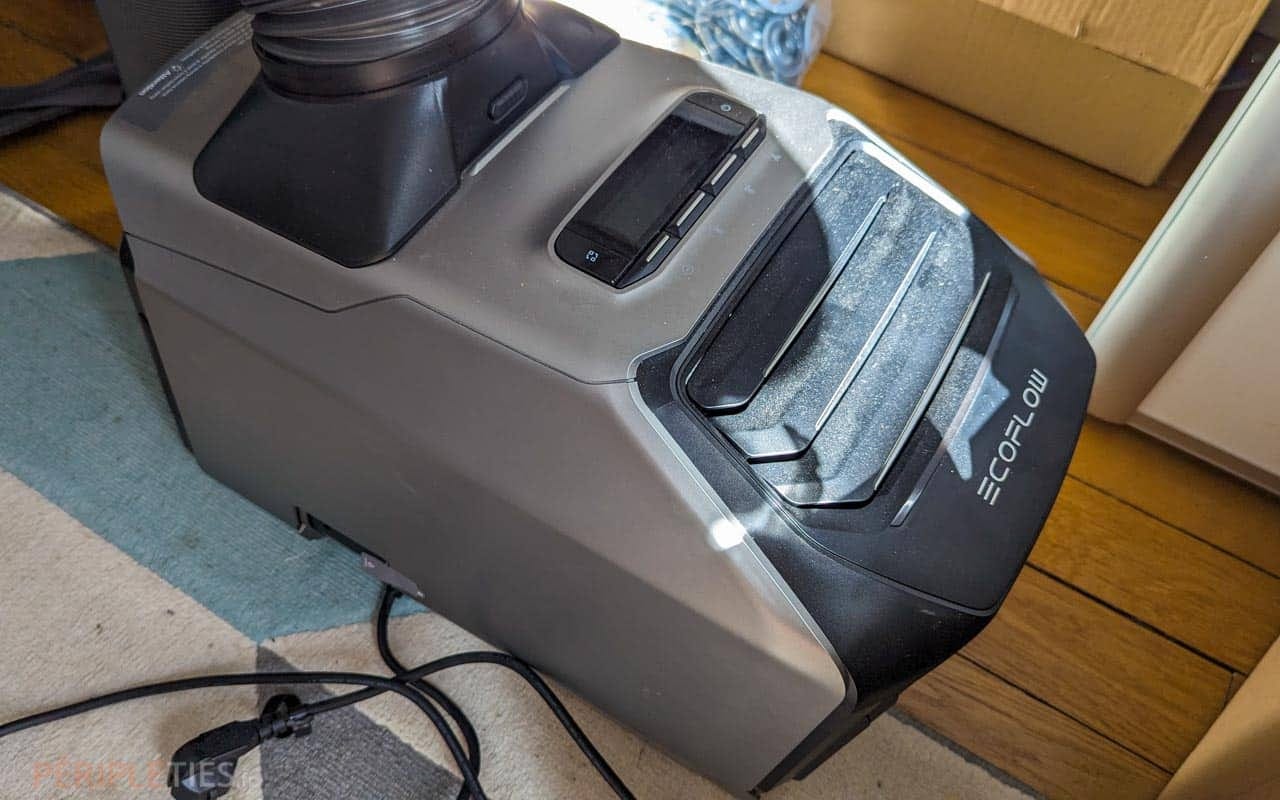
But don't expect miracles. Their maximum cooling power is 1,200 watts, which is quite low. Beware, too, of battery consumption.
This may be a good solution for converted vans, but not for motorhomes.
What are the alternatives to air conditioning?
Air conditioning may be efficient, but it consumes a lot of energy and requires an electrical connection. What's more, installation is not always possible. There are, however, limited alternatives for cooling the air inside your motorhome.
Air coolers
Less expensive than traditional air conditioners (around €300), air fresheners use water evaporation to lower the air temperature, on the same principle as a wet T-shirt. They are more environmentally-friendly and consume less energy, but are generally less effective in very humid climates.
- Evapolar Eva Smart
- Transcool EC3 evaporative
The turbo-vent
Powerful and silent, these fans installed in the skylight (or roof window) are designed to draw warm air outside or cool the interior space in ventilation mode. What's more, they are usually fitted with an external insect screen. The benchmark in this category is the Fiamma Turbo Vent.
Classic fans
Easy to install and economical, fans come in a range of models to suit the confined space of a motorhome. Stand fans, with their large propeller, stir the air quite well, while the more compact column fans slip easily into a corner.
However, on extremely hot days, a fan won't lower the temperature in the motorhome. It'll just stir up some... hot air.
How much does a motorhome air conditioner cost?
Let's move on to the price. It depends on the type of air conditioner you choose.
A good mobile air conditioner often starts at between 400 and 500 euros, like the Klarstein Pure Blizzard 3G. But prices can quickly climb for more powerful or connected models, such as the EcoFlow WAVE 2, sold for 1,200 euros (or even 3,000 euros with the additional battertie, which allows you to benefit from air conditioning without being connected to the mains).
Fixed air-conditioning systems are more expensive than mobile versions. Here, prices start at between 1,000 and 2,000 euros. A roof-mounted Dometic Freshlight 2200 costs up to 3,000 euros. For trunk-mounted air conditioning, a Truma Saphir Confort RC 2400 costs around €1,700. To this must be added installation costs, generally between 300 and 500 euros.
What's the best air conditioner for a motorhome?
The best roof air conditioners
- Dometic Freshlight 2200
- Dometic Freshjet 1700, 2200
- Teleco Telair Dualclima 8400H and 12400H
- Teleco Telair Clima eVan
- Truma Aventa Compact
- Truma Aventa Comfort
- Webasto Cool Top Trail 20
- Webasto Cool Top Trail 34
- Webasto Cool Top Trail 28
The best trunk air conditioners
- Dometic Freshwell 3000
- Truma Saphir Compact
- Truma Saphir Confort RC 2400
Installing air conditioning in a motorhome: how does it work?
Now that you've chosen your type of air conditioning, all that's left to do is install it. But the procedure will be different depending on whether you've chosen a roof air-conditioning system or a trunk air-conditioning system.
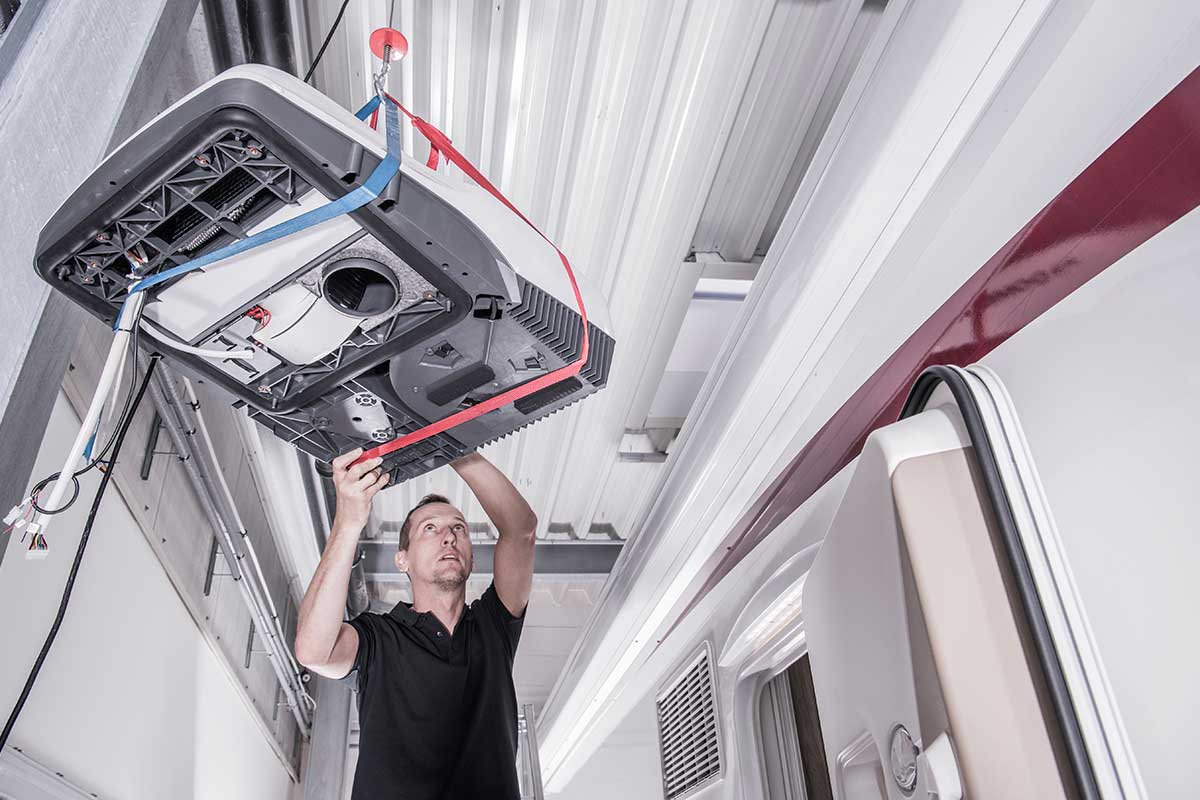
Installing a roof air conditioner
Most roof-mounted air conditioners already have the standard dimensions of a roof hatch (40 x 40 centimetres) and can therefore be installed fairly easily. If the hatch is larger (especially in older motorhomes), adapter frames are available.
Installation is more complicated if you don't want to use the hatch. In this case, the roof must be cut to the exact size and shape, and the air conditioner inserted. A frame must be added to stabilize the unit, and the whole thing must be sealed to prevent infiltration!
If in doubt, we recommend that you entrust the installation to a professional or an official dealer. This is particularly useful if you don't want to lose your motorhome's waterproof warranty.
Trunk air conditioning installation
The same principle applies to trunk air conditioning. Except that in this case, the unit has to be securely fastened inside the trunk, usually with straps, and the floor has to be drilled to collect and return the air.
You'll also need to create openings in the furniture to accommodate ventilation nozzles or ducting. Think carefully about the position of these openings to ensure optimum coverage of the interior, and use a hole saw for a clean finish.
Now you know all about air conditioning in your motorhome. See you soon.
Pauline & Simon


